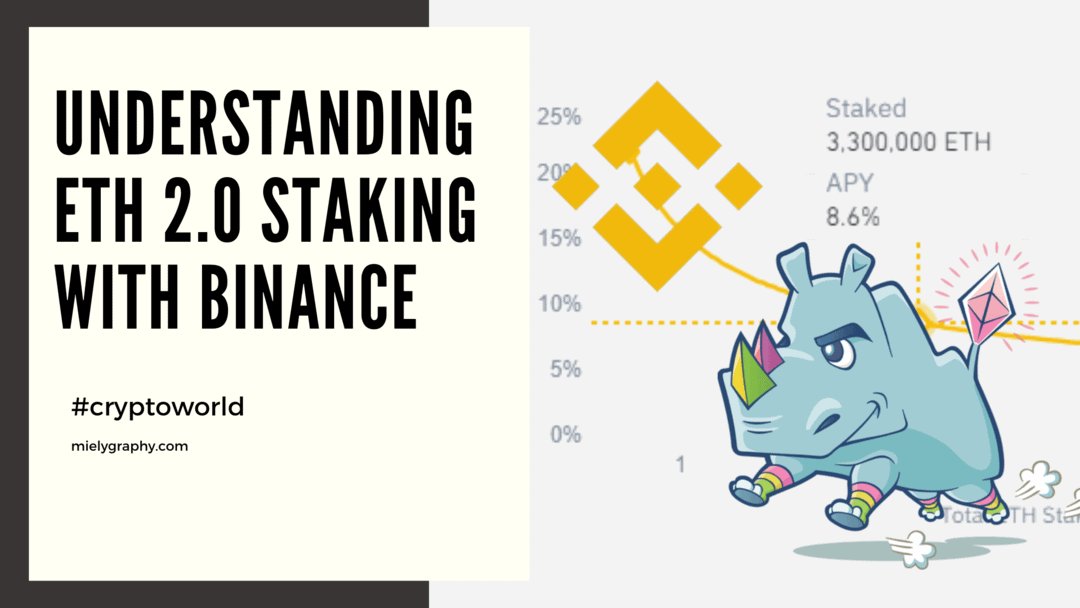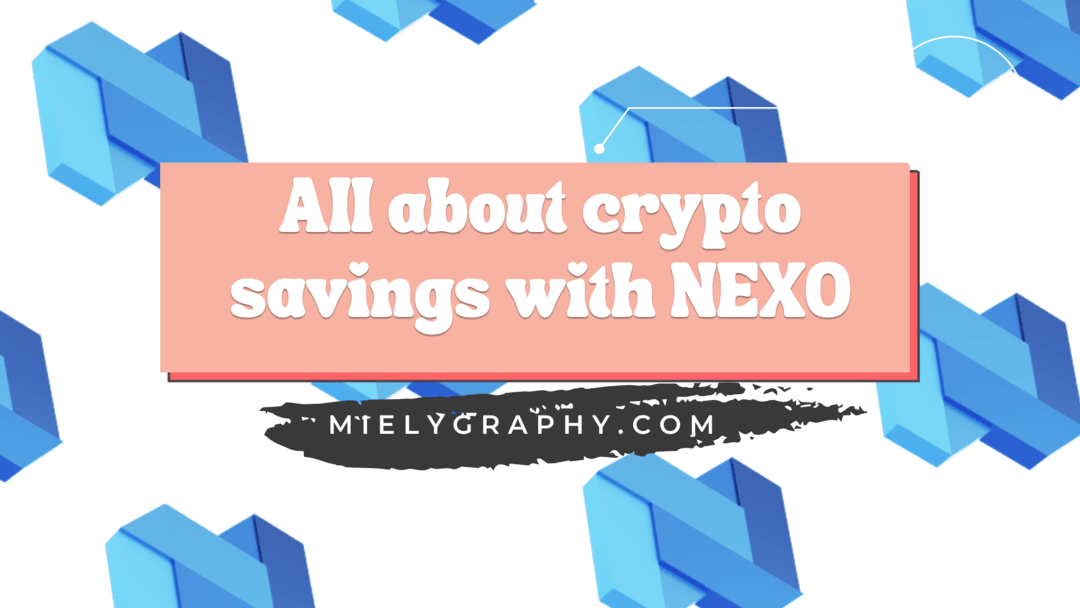Understanding ETH 2.0 Staking with Binance
I’ve mentioned a few days ago, how terrible I am with Trading, yet I am sharing a trading platform for cryptocurrencies.
While I am working on building some skills with trading, I have used different products from Binance that would allow me to grow my crypto assets daily. One of them is the ETH 2.0 staking with Binance.
For those who don’t know what ETH 2.0 staking is and whether should you go for it or not this post is definitely for you. I’ll try my best to explain the ETH 2.0 staking in a very understandable way and what are the things you should know, so stick around and read till the end.
Beginners Guide to Binance: Cryptocurrency Exchange/Trading Platform
What is ETH 2.0 Staking?
Let’s start this post with a what. What is ETH 2.0?
ETH 2.0 is a network upgrade to the current blockchain of Ethereum from Mining (Proof-of-Work) to minting (Proof-of-Stake).
Proof-of-Work Mining
For those who aren’t new to cryptocurrencies, you probably know already that all transactions for Ethereum are being securely processed by Miners. Miners are using high-performing GPUs to solve mathematical problems within the blockchain to complete a transaction. Mining uses a mechanism called Proof-of-Work. This means that whoever solves the equation first gets rewarded.
That said, miners earn Ether for processing transactions, and for them to be the first one to solve they need to run a mining rig that consists of multiple high-performing and high-powered GPUS. This mechanism uses a lot of power. To give you an idea, one GPU can use up to 150watts and miners uses a lot of GPUs and run it 24/7. The power it consumes can definitely affect our environment if we would really take it into considerations. It’s not just power consuming, it’s also producing heat. I tried mining and my GPU temp goes up to 80 degrees celsius, and that is just one GPU.
This is an example of a mining rig and there are hundreds or probably thousands of it in some large-scale mining farms. This kind of rig is just for personal use.
Proof-of-Stake using a Node
There’s also another way of processing transactions in a blockchain and that is with the use of the Proof-of-Stake mechanism. This is already being used by other cryptocurrencies but not all. Ethereum and Bitcoin networks, the largest know cryptocurrencies are still using proof-of-work mining.
ETH 2.0 is making a huge step in upgrading its network and turning it into a proof-of-stake mechanism.
So how do proof-of-stake works?
With proof-of-stake, you can earn passively just like mining by staking your cryptocurrency and setting up a node. A node doesn’t require much power as the mining rigs. It only requires a regular PC with decent specs, even a laptop can work as a node.
If you need more GPUs or miner with the Proof-of-work mining to higher hash rates and solve more equations quickly, proof-of-stake is different. According to my research, the more assets you stake on a node the more chances of getting picked to process a transaction. If the chances are higher, the more asset you can earn.
The downside though is that if your node fails to process, let’s say your PC restarted or the connection got lost then you’ll be penalized for it. Therefore, you’ll get a deduction on your staked assets.
Proof-of-Stake with ETH 2.0
So if you understood my explanation with Proof-of-Stake, you have probably been thinking that you won’t be picked for a transaction and earn rewards if there are many rich people staking their assets. That’s a problem.
Well technically you’re right about that, but with ETH 2.0 they will only allow a staked amount of 32 ETH per node, and that is the minimum and the maximum stake amount per node. So if you want to stake 64 ETH then you need 2 nodes to do so.
If you wanted to stake your ETH directly to Ethereum.org, you’ll be required to set up and maintain your own node and you need to stake 32 ETH. It’s very technical to set up a node plus not everyone has 32 ETH that’s why there are other options that you can do to earn Ethereum passively and one of those options are through Binance ETH 2.0 Staking.
BTW, if you stake 32 ETH and set up your own node, there’s no turning back. Your staked ETH will be locked for at least 24 months or more. You can only withdraw from staking once Phase 1 is done. Currently, the upgrade is at Phase 0 and they are predicting the end of Phase 1 after 2 years and that is still a tentative duration.
Read how to become a full validator or set up a node on your own at ethereum.org
What is Binance ETH 2.0 Staking?
Binance is accepting ETH 2.0 staking to all their users right now. This is (I think) better than staking ETH directly. I’ll explain why. Here are the things you need to know:
First of all, Binance is not forcing to stake 32 ETH. As far as I know, the minimum amount you can stake is 0.01 ETH. And if you stake with Binance, you no longer need to set up a node because they will be providing it already. So all you need to do is just stake your ETH and that’s it.
Binance will also follow the same rules as the ETH 2.0 staking directly with ethereum.org. That rule is that your ETH will be locked until Phase 1 is done which is going to take up to 2 years. But there’s a twist with Binance that’s why I think it’s better.
Binance will provide you BETH
When you stake your ETH to Binance, they’ll give you another token called BETH. BETH is Binance Ethereum. This token will define your staked ETH with Binance.
What will happen is that if you staked 1 ETH with Binance ETH 2.0 Staking, you’ll receive 1 BETH. So that’s 1ETH=1BETH.
While we haven’t reached the end of Phase 1, you just need to hold your BETH on your spot account.
Every day, you’ll receive a cumulative APY(interest) on your total BETH. APY is calculated using the chart above. That means on a daily basis you’ll earn a passive income, but that’s only applicable when you have your BETH in your spot account. After 2 years or when Phase 1 is done whatever your balance on BETH is can be replaced into ETH in a 1:1 ratio.
So if in 2 years, your ending BETH balance is 2 BETH you can request it to be replaced as 2 ETH.
BETH is a loophole to the 2-year lock-in period
BETH is tradable versus ETH on Binance. The trading price is lower compared to ETH. Currently 1 BETH is equivalent of 0.984 ETH.
This is a loophole given to us by Binance. Despite locking your ETH for 2 years, if ever you wanted to pull out your ETH from being staked, you can simply sell your BETH to ETH. But of course, that is for a lower price. At least, there’s a way to escape if you can’t commit to 2 years.
Also, if you wanted to grow your BETH so you can exchange more ETH after Phase 1 then you can simply buy it using ETH. You can have 1 BETH by spending 0.984 ETH. The trading price changes.
MetaMask and Binance Chain Wallet (Decentralized Wallets to Check)











4 thoughts on “ETH 2.0 Staking with Binance: What you need to know before staking?”
Hi, great article! What would happen if you just purchased BETH tokens, but did not stake any ETH. Would you still receive staking rewards and be able to convert the BETH to ETH 1:1 after phase 1?
Hi regarding that one I am not really sure because I did stake a few thru their Eth 2.0 staking page before buying more on the trading pair. Based on my understanding once done with phase 1 you can convert it back to ETH 1:1 ratio but Binance did not have any clear message if their staking service would still be available by then if they still have that after phase 1 for sure you will still earn the staking rewards as long as it’s still in BETH because the staking rewards on Binance is based on the on-chain rewards of ETH 2.0 and with that eth 2.0 the staking rewards will continue but the apy may go down because it’s based on the graph I have show on the post. Thanks for dropping by ❤️
Just send them a Messsage and they said that if you buy BETH on the trade.. and you keep it on the spot wallet… you will get the interest rate… so I think it is better to buy BETH with the ETH that I would invest… since it will be “cheaper” to buy… and still have the interest coming if I keep the BETH long enough..
Thanks for letting us know 😊